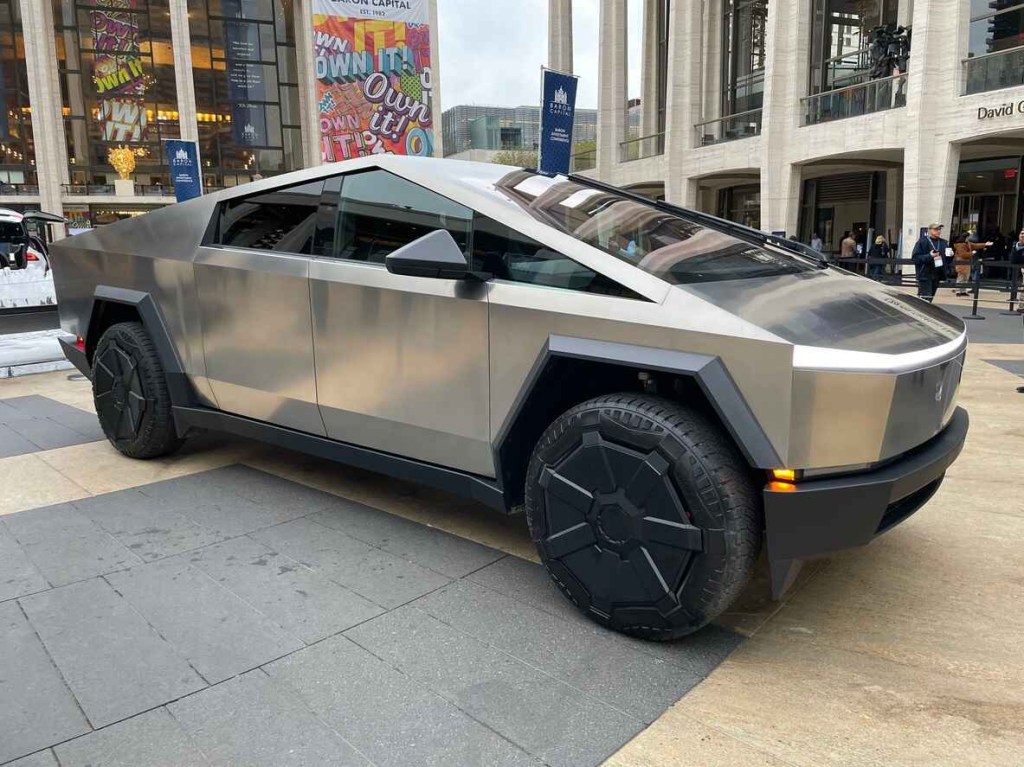
Is the Tesla Cybertruck Actually Poised to Dominate Electric Truck Sales?
If you’re considering buying an electric vehicle (EV) pickup truck but want more options, 2024 looks promising. In addition to Rivian, Ford, and GMC, EV pickups from Chevrolet, Ram, Toyota, and Tesla should roll out in 2024. Along with the big names, expect some promising EV pickup start-ups to enter the market in 2024. With this much competition, is the Tesla Cybertruck poised to dominate electric truck sales?
Rivian is the leader right now
Of the three mainstream EV pickup trucks available in 2023, the Rivian R1T had the highest sales. According to Ford Authority, Rivian R1T’s 2023 Q3 sales increased by 86.36 percent compared to its 2022 Q3 sales. With 8,200 Q3 2023 sales, the Rivian R1T owns a 65-percent market share compared to Ford Lightening’s 28 percent. During the same period, the GMC Hummer EV Pickup saw 874 sales for a 7-percent market share.
Through the first nine months of 2023, consumers purchased 16,011 Rivian R1T pickups compared to 8,000 in 2022. Comparatively, Ford moved 12,260 Lightnings in 2023, up from 8,760 in 2022. While Ford experienced a 45.8 percent downturn for Q3 from last year, the expanding EV pickup market appears strong.
The overall sales numbers aren’t that impressive though
Rivian’s 65-percent market share and 100-percent year-to-date sales increase sound impressive. But is the segment’s volume enough to support multiple new EV pickup entrants in 2024?
The first nine months of 2023 saw just under 30,000 EV pickup sales. For comparison, Ford sold about 550,000 gasoline engine-equipped F-Series pickups over the same period. In addition, the period saw 411,000 Silverado, 332,000 Ram, 216,000 Sierra, 92,000 Tundra, and 15,000 Titan sales.
Some quick math puts that at about 1.62 million pickup truck sales in the US for the first three quarters of 2023. These totals put EV trucks at less than two percent of full-size pickup sales.
What will Tesla Cybertruck sales be compared to?

Tesla lists Cybertruck’s towing capacity at 11,000 pounds and payload at 2,500, which puts it firmly in the territory of full-size gas-powered trucks. However, its 67 cubic feet of secure inside storage puts it in SUV territory, except with an additional 24 square-foot truck bed. However, considering its stainless-steel exoskeleton, shatter-resistant armor glass, 17-inch ground clearance with 12 inches of suspension travel, and 2.6-second zero to 60 mph acceleration, it isn’t easy to find anything for comparison.
When released, if it performs as promised, the Tesla Cybertruck will have no EV equals and few gas-powered rivals. While the Rivian R1T provides more range than the Cybertruck’s projected 340 miles, it’s more expensive and has a lower payload capacity.
Ultimately, the Tesla Cybertruck’s popularity with consumers hinges on its appearance. Its futuristic design isn’t something most traditional pickup truck buyers will embrace immediately. However, the Cybertruck could expose an untapped market of non-traditional consumers looking for something different while enjoying the utility of a truck bed.





